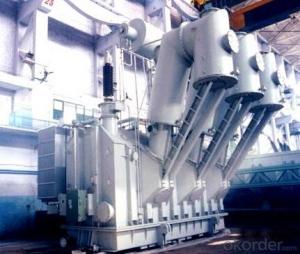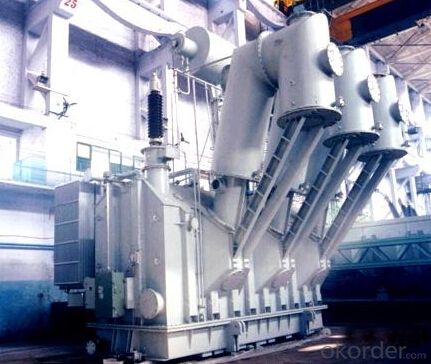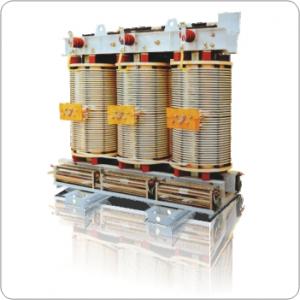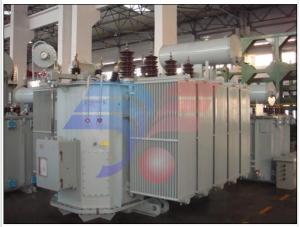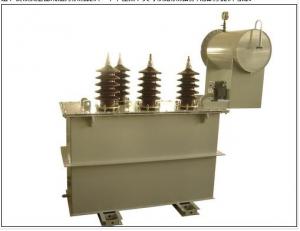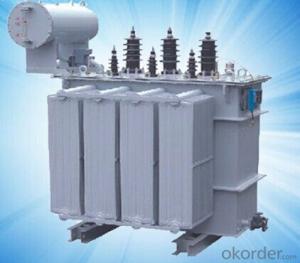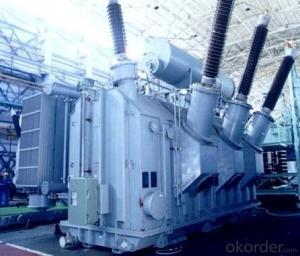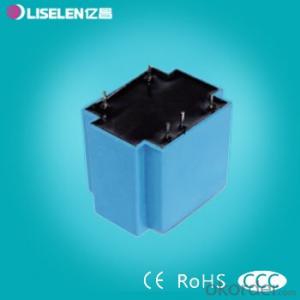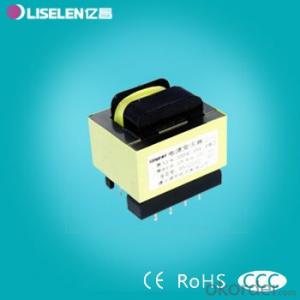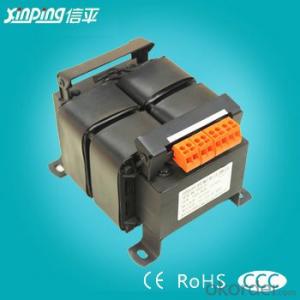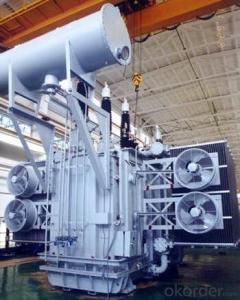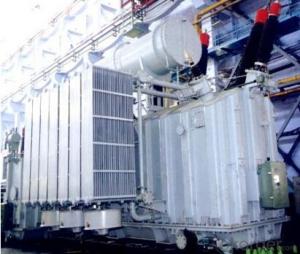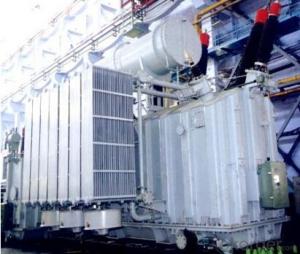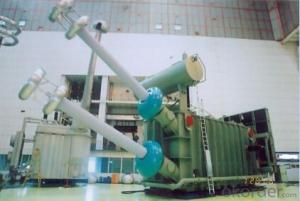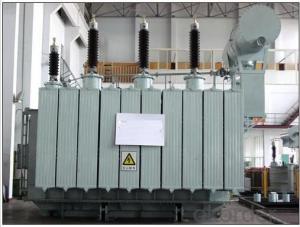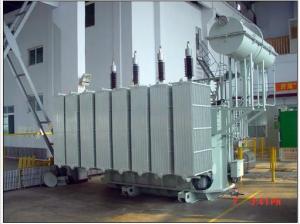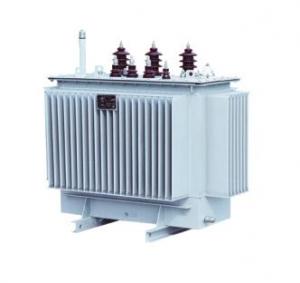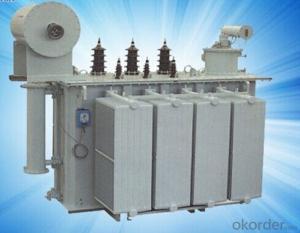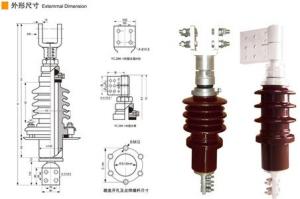40MVA/220KV startup/standby OLTC transformer
- Loading Port:
- Tianjin
- Payment Terms:
- TT OR LC
- Min Order Qty:
- 1 pc
- Supply Capability:
- 1 pc/month
OKorder Service Pledge
OKorder Financial Service
You Might Also Like
Quick Details
| Place of Origin: | HeBei | Brand Name: | CNBM | Model Number: |
|
| Usage: | Power | Phase: | Coil Structure: | Toroidal | |
| Coil Number: | 3 Winding | Capacity: | Rated Voltage: | 40MVA/220KV | |
| Connection Symbol: | YNd11 Dyn11 YNyn0d11 | Tank: | Cover type or Bell type | OLTC: | MR or ABB or SMS |
Packaging & Delivery
| Packaging Detail: | Mainbody --naked Disassembled parts -- crate |
| Delivery Detail: | 3 months |
Specifications
1. CESI certificate
2. High short-circuit withstand
3. Low loss, PD and noise
4. CTQC certificate
5. No leakage
Description
The application of the 40MVA/220KV startup/standby OLTC transformer, and matches well with the transmission capacity of OLTC lines, which has wide prospect of application. Because of its large capacity and large volume, the whole transportation weight with nitrogen is about 200-490 tons, and due to the restricted transport conditions, the transportation becomes the critical issue for application of the 40MVA/220KV startup/standby OLTC transformer. In order to make the products applicable to any OLTC substation in our country, the state grid of corporation of China set the "A study of easy-transport large capacity OLTC Transformer” as a key scientific research projects, and entrusted BTW to carry out the research.
During the process of research and development, BTW adopted the advanced design technology and modular design, the transformer can be transported disassembly and with advantages of compact core and winding body, less transportation weight and low transportation cost, effectively solves the need of OLTC construction in the transportation restricted areas. By using the most advanced 3D magnetic field calculation software, BTW performed detailed analysis and calculation for the magnetic flux leakage and eddy current loss of the transformer coil, iron core and oil tank steel structures. Besides, by using of the advanced electric field calculation software, BTW performed detailed analysis and calculation of main longitudinal insulation, and mastered the arrangement of the main longitudinal insulation of large capacity OLTC transformer and the control of distribution of winding magnetic flux leakage. All of which make the products with low loss, low noise, small volume, strong anti short circuit ability, no local overheating and other significant advantages, and guarantee the long-term safe and stable operation.
The world's first on-site assembled large capacity OLTCTransformer’s right at the first time once again filled the gap in the field of OLTC transformer research after Chinese transformer industry overcame the difficulty of integral transport of the 40MVA/220KV startup/standby OLTC transformer, which marks BTW has fully occupied the world transformer industry technical peak. The successful development of the product filled the gaps in the domestic technology and met the urgent need of UHV construction application in our country, greatly improved the technical level and manufacturing ability of BTW in terms of OLTC Transformer products.
- Q: i think transformers
- Transformers hands down
- Q: Transformer 1KVA can load how much security, how to calculate the formula
- Hello there: - ★ 1,1KW single-phase transformer, rated current: Ⅰ = 1000 VA ÷ 220 V = 4.5 A, that is, the apparent current of 4.5 A. - ★ 2,1KW three-phase transformer rated current: Ⅰ = 1000 VA ÷ (1.732 × 380 V) = 1.52 A. Three-phase transformer rated output current, apparent current is 1.52 A.
- Q: KW how to know how much transformer?
- Know the number of KW, how to calculate how much transformer is needed. In general, our calculation is based on the nature of the equipment, the production process, the development prospects of the production enterprises to analyze the size of the transformer, some companies, how many kilowatts to choose the number of KVA, and some enterprises have all the equipment must boot Run, then, on the choice of a little bigger, the machinery industry enterprises, generally in accordance with the installed capacity of 4-5 fold to select the transformer capacity. For reference only.
- Q: I am looking into purchasing a counter top coffee roaster that requires a 30 Amp 120 outlet; manufacturer says it uses about 21A.The only plug/circuit that can handle this load at this time is a 240 V outlet. We have a gas stove and we are not currently using the circuit.Does anyone know of a manufacturer that makes a external/freestanding step down (240 to 120) voltage transformer / regulator that I can plug into a grounded (North American) 220V outlet ? Note: a) I don't need it to be variable, just a fixed 240V to 120V is perfect. b)It would also need some sort of internal voltage regulation/ stabilization as erratic voltages would affect the (coffee) roast.
- If each leg of the 240v circuit is 30 amps, you won't need a transformer at all. There are travel kits for going to foreign countries that have a variety of adapters for plugging into 240V outlets that only use one leg of the circuit, which is 120v. Find the adapter that fits your outlet, and you will be up and running! DO NOT TRY TO MAKE SUCH AN ADAPTER YOURSELF UNLESS YOU HAVE A DEGREE IN ELECTRICTY/ELECTRONICS! Using a transformer involves balancing the load, getting a transformer that is rated for the current, a lot of worms in that can. There are also adapters available to stabilize the current, they are available wherever compurers are sold.
- Q: Transformer rated capacity 500 / 750KVA (AN / AF) What does it mean?
- Transformer under natural cooling conditions, the maximum capacity of 500kVA, air-cooled conditions, the maximum 750kVA A refers to air, N refers to the natural cycle, F refers to forced circulation Transformer (Transformer) is the use of electromagnetic induction principle to change the AC voltage of the device, the main components are primary coil, secondary coil and core (core). The main functions are: voltage conversion, current conversion, impedance conversion, isolation, voltage regulator (magnetic saturation transformer) and so on. According to the purpose can be divided into: power transformers and special transformers (electric furnace change, rectifier, frequency test transformer, voltage regulator, mine transformer, audio transformers, IF transformers, high-frequency transformers, impact transformers, instrument transformers, electronic transformers , Reactors, transformers, etc.). Circuit symbols commonly used as the beginning of the number. Example: T01, T201 and so on.
- Q: I hate feeling the need to justify myself, but I've seen a lot of answers telling askers to do their own homework. I'm trying to do so, but can't find any equations in the book relating power to voltage as well as turn number. Is it PviN? I've just seen Pvi, but that wouldn't apply to multiple loops. This is for ideal transformers by the way, so power for the secondary and primary coils is the same right? But are their vi's equal, or their viN's?The primary coil of a transformer has 200 turns and the secondary coil has 800 turns. The power supplied to the primary coil is 400 watts. What is the power generated in the secondary coil if it is terminated by a 20-ohm resistor?
- The turns ratio is 4:1 of the primary. The power supplied to the primary is 400W. So regardless of anything else, in a ideal transformer, 400W is available on the secondary. But voltage will be 4x higher, current 4x smaller, than the voltage and current in the primary. Disregarding all that, if there is 400W of power flowing in the primary, then 400W will be being dissipated in the 20 ohm resistor. Watts in watts out, but secondary load (resistance) controls the wattage. There is no way to tell the output voltage and current, without knowing the input voltage and current. But whatever they are, the product of voltage x current will be 400W, in this instance.
- Q: Rated capacity of three-phase transformer S = √3 * U * I
- So, when calculating the three-phase load, U is the line voltage, and I is the line current. S = 1.732 (root 3) UI. S = 3UI. Where U is the phase voltage and I is the phase current. S = 1.732UI where U is the line voltage and I is the line current. Two methods, the same result.
- Q: Hi there.I have purchased a Stepdown Transformer so i can use a Record Cleaning Machine I am buying from the U.S.It uses a powered suction unit to clean the record.All transformers for use with American equipment have 110v output, but i think your equipment is usually 120v.in I have been told that there is nothing to worry about as 110v out on the transformer is enough to power the equipment connected to it .Our AC output in Australia is 240v but we can use any voltage from 220 to 250. Therefore 110v should be enough.can anyone clarify and tell me it should be ok.Thanks a lot in advance.
- Electrical appliances are designed to tolerate the range of voltage. Here in the USA the terms 110 and 120 are used interchangeably as are 220 and 240. Good luck mate!
- Q: a house's two furnaces are not working. the pilot lights are on. The lady's brother said there is no voltage at the thermostat. where does the 24 v come from? a transformer ? where?
- The transformer requires 120 volts then steps down to the 24 volts needed to power stat etc.Check by the furnaces and see if you can locate a light switch that is off and powers the transformers.Both should have a switch close by each unit.If any breakers are off in the panel then they would need to be turned on as well.
- Q: 220V to 12V transformer L N + V + V on behalf of what? The more detailed the better! Thank you prawn
- LN represents the line of fire and zero line, + V is the input and output voltage
Send your message to us
40MVA/220KV startup/standby OLTC transformer
- Loading Port:
- Tianjin
- Payment Terms:
- TT OR LC
- Min Order Qty:
- 1 pc
- Supply Capability:
- 1 pc/month
OKorder Service Pledge
OKorder Financial Service
Similar products
Hot products
Hot Searches
Related keywords
